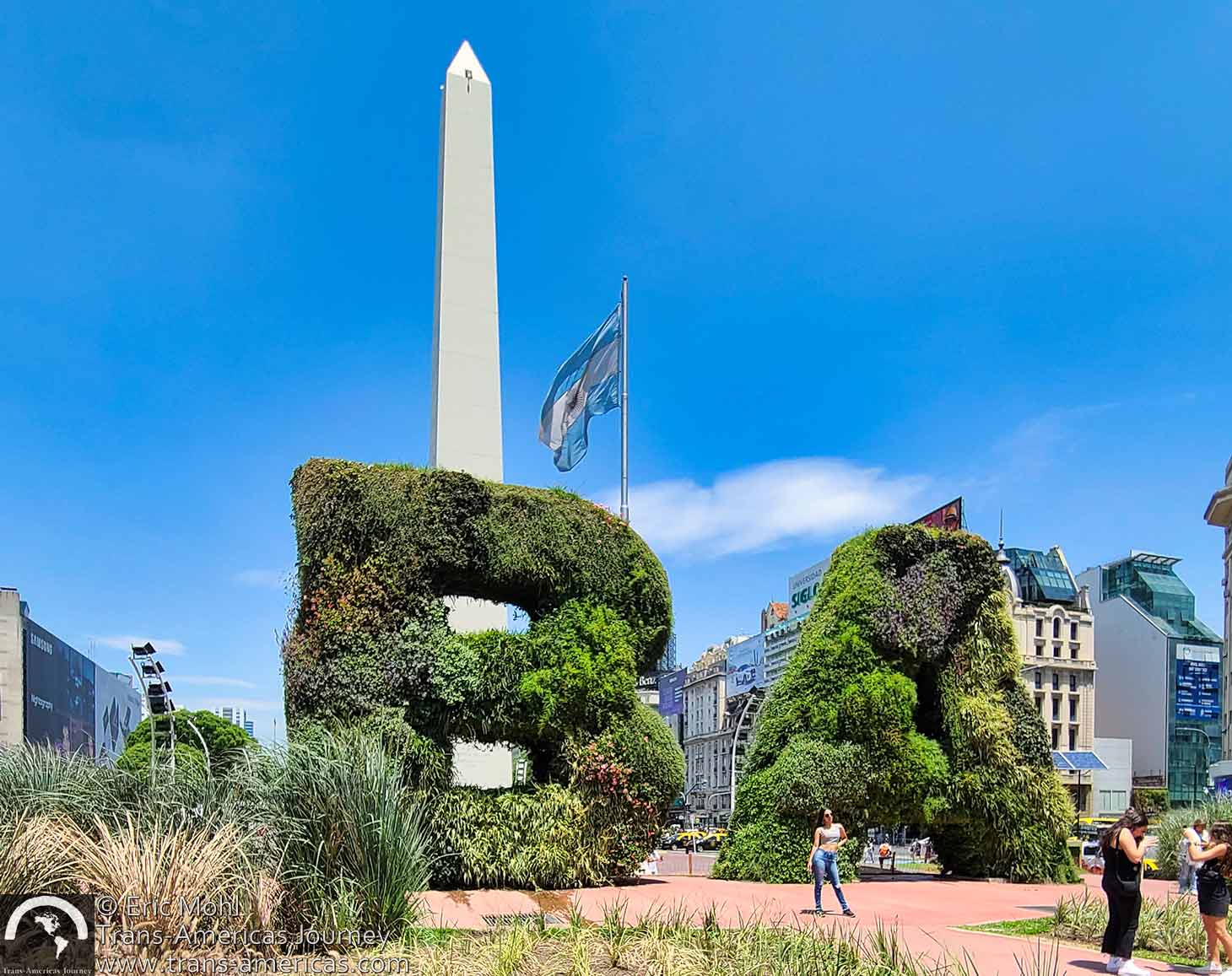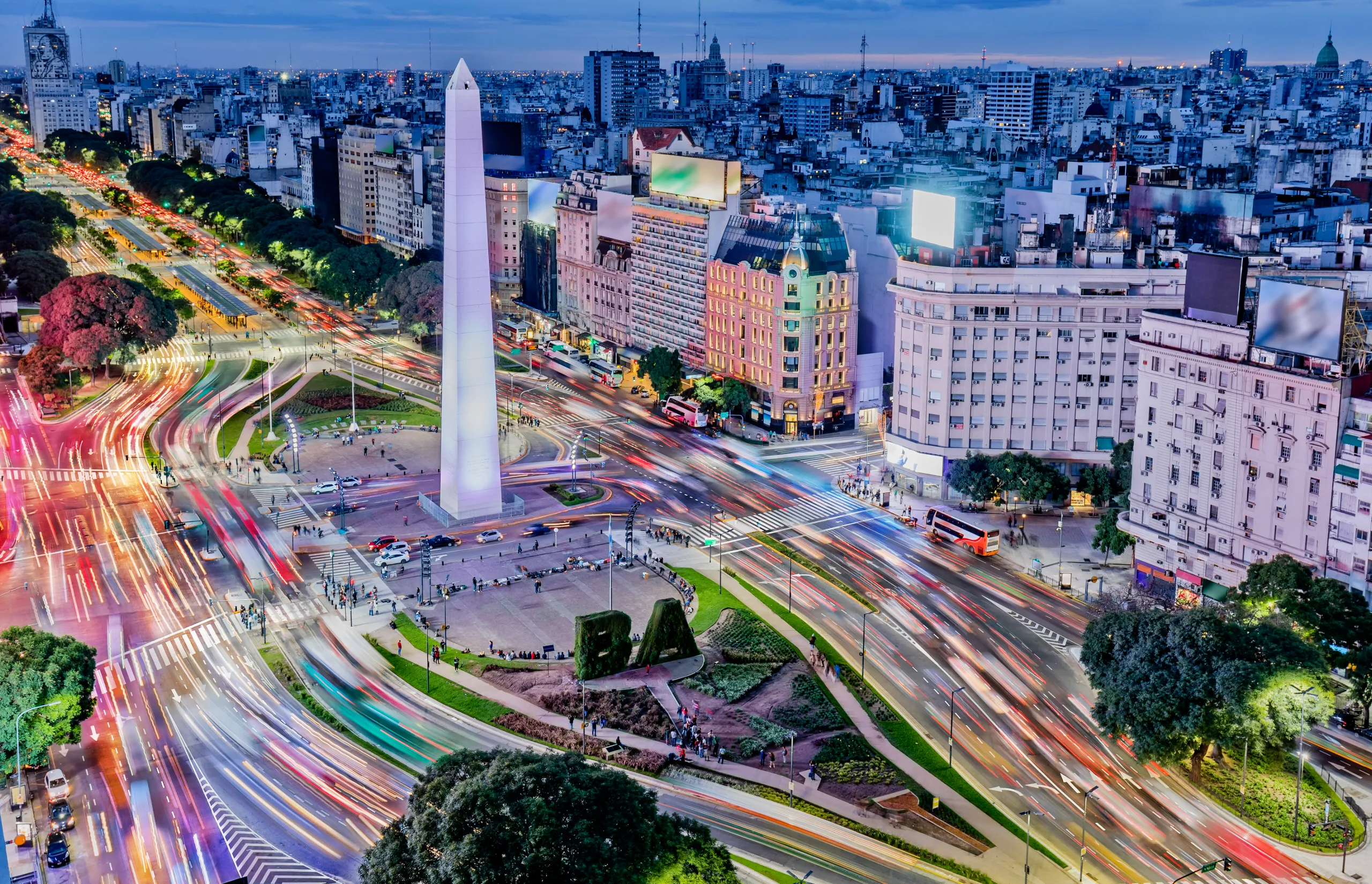
Buenos Aires, the vibrant capital of Argentina, is a city that pulsates with a unique blend of European grandeur and Latin American passion. From its elegant boulevards and Belle Époque architecture to its passionate tango culture and world-renowned cuisine, Buenos Aires offers a captivating sensory experience that draws travelers from across the globe. This comprehensive guide will equip you with everything you need to plan an unforgettable journey to the "Paris of South America."
A Tapestry Woven in Time: The Rich History of Buenos Aires
To truly appreciate Buenos Aires, understanding its historical roots is essential. Founded by Spanish conquistador Pedro de Mendoza in 1536, the city faced early struggles and was briefly abandoned. Its second and permanent founding by Juan de Garay in 1580 marked the beginning of its rise as a significant port city.
/argentina-buenos-aires-dawn-at-center-with-rush-hour-667138246-5b5f85ac46e0fb00258228a8.jpg)
Related Articles about Buenos Aires: A Tango of Culture, History, and Unforgettable Experiences:
- Lebanon: A Journey Through Ancient Wonders, Vibrant Culture, and Unyielding Spirit
- Ukraine: A Journey Through History, Culture, and Unyielding Spirit
- Ooh La La! Your Grand Adventure to France Awaits: A Comprehensive Travel Guide
- La Dolce Vita Awaits: Your Comprehensive Guide to Traveling to Milan
- The Heart of Africa: An Unforgettable Journey Through Kenya
The 19th century was a period of immense transformation. Buenos Aires became the center of Argentina’s burgeoning independence movement and experienced waves of European immigration, particularly from Italy and Spain. These immigrants profoundly shaped the city’s architecture, language, cuisine, and cultural identity, leaving an indelible mark that is still evident today. The early 20th century saw Buenos Aires flourish as a global economic powerhouse, a period reflected in its opulent buildings and sophisticated lifestyle.
However, Argentina’s history is also marked by periods of political and economic instability, which have, at times, influenced the city’s development. Despite these challenges, Buenos Aires has consistently demonstrated resilience, evolving into the dynamic and captivating metropolis it is today.
Unveiling the Soul: Top Attractions in Buenos Aires
Buenos Aires offers a dazzling array of attractions, catering to diverse interests. Here are some of the must-visit landmarks and experiences:
1. Plaza de Mayo: The historical and political heart of Buenos Aires, this iconic square has witnessed pivotal moments in Argentine history. Admire the Casa Rosada (Pink House), the presidential palace, and the Metropolitan Cathedral, where Pope Francis once served as Archbishop. The square is also home to the Pirámide de Mayo, Argentina’s oldest monument.
2. La Boca & Caminito: This vibrant neighborhood, with its brightly painted corrugated iron houses, is synonymous with tango. Stroll down Caminito, a pedestrian street museum adorned with colorful murals and street performers, and soak in the bohemian atmosphere. While charming, be mindful of your surroundings and stick to well-trafficked areas.
3. Recoleta Cemetery: More than just a burial ground, Recoleta Cemetery is an open-air museum of elaborate mausoleums and sculptures, housing the remains of Argentina’s most prominent figures, including Eva Perón. The intricate artistry and serene ambiance make it a truly unique and moving experience.
4. El Ateneo Grand Splendid: This former opera house, miraculously transformed into a breathtaking bookstore, is a architectural masterpiece. Marvel at the ornate balconies, gilded ceilings, and the stage, now adorned with books. It’s an ideal spot to browse literature or enjoy a coffee in a truly magical setting.
5. San Telmo: Buenos Aires’ oldest neighborhood, San Telmo, retains its colonial charm with cobblestone streets, antique shops, and traditional bodegones (taverns). On Sundays, the bustling San Telmo Market comes alive with antiques, crafts, street performers, and, of course, tango dancers.

6. Palermo: This sprawling and diverse neighborhood is divided into distinct areas, each with its own character. Palermo Soho is known for its trendy boutiques, vibrant street art, and lively nightlife. Palermo Hollywood is the hub for media and entertainment companies. Palermo Woods (Bosques de Palermo) offers sprawling green spaces, lakes, and the beautiful Rosedal (Rose Garden), perfect for a relaxing afternoon.
7. Teatro Colón: One of the world’s premier opera houses, Teatro Colón is an architectural marvel renowned for its exceptional acoustics. Take a guided tour to admire its opulent interiors, including the stunning auditorium, and if possible, catch a performance for an unforgettable cultural experience.
8. MALBA (Latin American Art Museum of Buenos Aires): Immerse yourself in the rich artistic heritage of Latin America at MALBA. The museum houses an impressive collection of modern and contemporary art, featuring works by renowned artists like Frida Kahlo and Diego Rivera.
9. Puerto Madero: The city’s modern waterfront district, Puerto Madero, showcases sleek skyscrapers, upscale restaurants, and charming pedestrian bridges, including the iconic Puente de la Mujer (Woman’s Bridge). It’s a great place for a scenic walk or a sophisticated dining experience.
10. Tango Show: No visit to Buenos Aires is complete without experiencing the passionate and mesmerizing dance of tango. Numerous venues offer professional tango shows, ranging from intimate milongas (tango dance halls) to elaborate dinner shows.
Planning Your Argentine Adventure: Essential Travel Tips
To ensure a smooth and enjoyable trip to Buenos Aires, consider these practical tips:
- Visa Requirements: Check the visa requirements for your nationality well in advance of your travel. Many nationalities can enter Argentina visa-free for tourism.
- Currency: The official currency is the Argentine Peso (ARS). It’s advisable to carry some cash for smaller purchases, but credit cards are widely accepted in most establishments. Be aware of the fluctuating exchange rates and consider using services like Western Union for better rates when exchanging money.
- Language: Spanish is the official language. While many people in tourist areas speak some English, learning a few basic Spanish phrases will greatly enhance your interactions and show respect for the local culture.
- Safety: Buenos Aires is generally a safe city, but like any major metropolis, it’s important to be aware of your surroundings. Exercise caution, especially in crowded areas, and avoid displaying expensive jewelry or electronics.
- Tipping: Tipping is customary in restaurants (around 10% is appreciated) and for services like hotel staff and tour guides.
- Electricity: The standard voltage is 220V, and plugs are typically Type I (three flat pins in a V shape). Bring an adapter if necessary.
- Tap Water: While generally safe to drink in Buenos Aires, some people prefer to drink bottled water due to taste or personal preference.
Finding Your Home Away From Home: Accommodation Options
Buenos Aires offers a wide range of accommodation to suit every budget and style:
- Luxury Hotels: For a truly indulgent experience, consider hotels in Recoleta or Puerto Madero, offering impeccable service and stunning views.
- Boutique Hotels: Charming boutique hotels can be found in neighborhoods like Palermo Soho and San Telmo, providing a more intimate and stylish stay.
- Mid-Range Hotels: Numerous comfortable and well-located hotels are available throughout the city, offering good value for money.
- Hostels: For budget travelers and those looking to socialize, hostels are abundant, particularly in Palermo and San Telmo.
- Apartments & Airbnb: Renting an apartment can be a great option for longer stays or for those who prefer a more independent experience.
Popular Neighborhoods to Consider for Accommodation:
- Recoleta: Elegant and upscale, known for its beautiful architecture, museums, and proximity to the cemetery.
- Palermo: Trendy and vibrant, with a lively nightlife, excellent dining, and boutique shopping.
- San Telmo: Historic and bohemian, perfect for those seeking a more authentic and artistic atmosphere.
- Centro (Downtown): Convenient for sightseeing and business, with a mix of hotels and apartments.
- Puerto Madero: Modern and sophisticated, offering waterfront views and upscale amenities.
Navigating the City: Transportation in Buenos Aires
Buenos Aires boasts an efficient public transportation system, making it easy to explore the city:
- Subte (Subway): The Subte is the most efficient way to get around, with six lines covering most of the city. Purchase a SUBE card (a rechargeable smart card) to pay for your fares.
- Buses (Colectivos): An extensive bus network covers areas not reached by the Subte. The SUBE card is also used for bus fares.
- Taxis: Taxis are readily available and relatively affordable. Ensure the meter is used and be cautious of unofficial taxis. Ride-sharing apps like Uber and Cabify are also popular.
- Walking: Many neighborhoods are best explored on foot, allowing you to discover hidden gems and soak in the local atmosphere.
- Biking: Buenos Aires has a growing network of bike lanes, and bike-sharing services are available.
Embracing the Rhythm: The Best Time to Visit Buenos Aires
Buenos Aires enjoys a temperate climate, with four distinct seasons. The best time to visit depends on your preferences:
- Spring (September to November): This is a fantastic time to visit, with pleasant temperatures, blooming jacaranda trees, and fewer crowds. The city is alive with outdoor activities and cultural events.
- Autumn (March to May): Similar to spring, autumn offers mild temperatures and beautiful fall foliage, especially in the city’s parks. It’s a comfortable time for sightseeing and exploring.
- Summer (December to February): Buenos Aires can get quite hot and humid during the summer months, with temperatures often exceeding 30°C (86°F). However, this is also a lively period with festivals and a vibrant atmosphere.
- Winter (June to August): Winter is generally mild, with average temperatures around 10-15°C (50-59°F). While it can be cooler, you’ll encounter fewer tourists and can enjoy indoor cultural attractions and cozy cafes.
Key Considerations for Timing:
- Tango Festival: If you’re a tango enthusiast, aim to visit during the World Tango Championship (usually in August).
- Christmas and New Year: The city is beautifully decorated during the holiday season, but expect higher prices and larger crowds.
- Easter Week (Semana Santa): Many businesses may close during this religious holiday.
A Culinary Journey: Savoring the Flavors of Buenos Aires
Buenos Aires is a gastronomic paradise, renowned for its high-quality beef and European-influenced cuisine.
- Asado: The quintessential Argentine barbecue is a must-try. Enjoy succulent cuts of beef cooked over an open flame at a traditional parrilla (steakhouse).
- Empanadas: These savory pastries, filled with meat, cheese, vegetables, or other ingredients, are a delicious and convenient snack or meal.
- Milanesa: A breaded cutlet, typically veal or chicken, is a beloved comfort food.
- Dulce de Leche: This sweet caramel spread is ubiquitous and can be found in pastries, desserts, and even as a topping.
- Malbec Wine: Argentina is famous for its Malbec, a rich and full-bodied red wine that pairs perfectly with steak.
- Italian Influence: Due to the large Italian immigrant population, pasta and pizza are also popular and delicious options.
Beyond the Postcard: Experiencing the True Spirit of Buenos Aires
To truly connect with Buenos Aires, venture beyond the tourist trail. Attend a local milonga, strike up conversations with Porteños (residents of Buenos Aires), explore local markets, and embrace the city’s unpretentious charm. Buenos Aires is a city that rewards curiosity and an open heart, promising an experience that will linger long after you’ve departed. So, pack your bags, embrace the rhythm, and prepare to be captivated by the magic of Buenos Aires.





